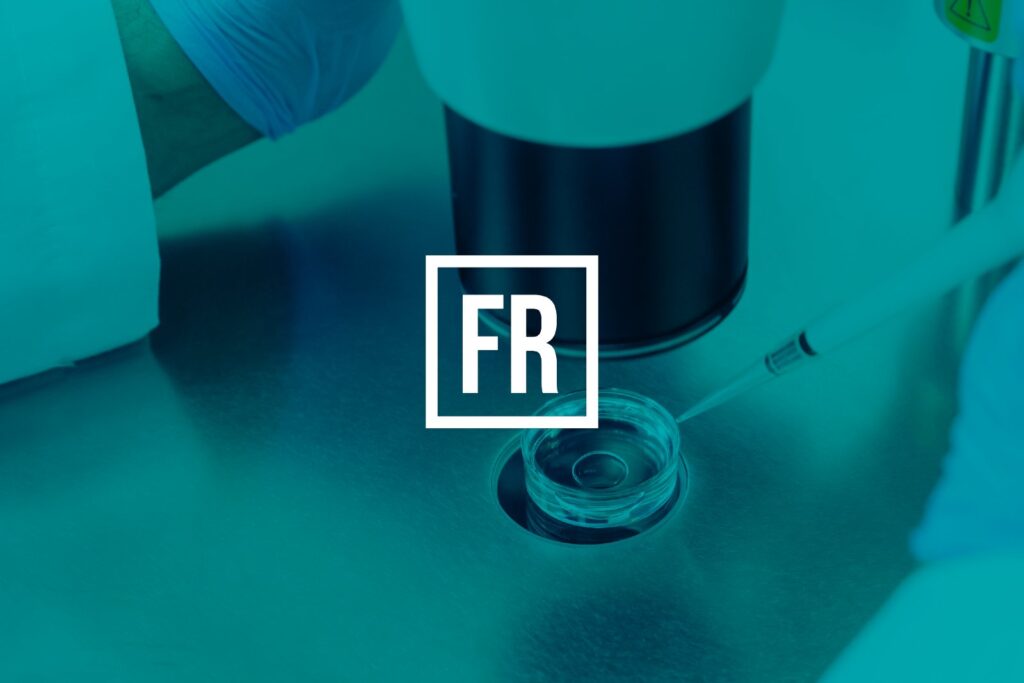There are over 75,000 cycles of fertility treatment each year in the UK, and everyone who embarks on treatment does so in the hope of one day having a healthy baby.
To realise that dream, there are many decisions that need to be made, and not all are easy. Even before they walk through a clinic’s door, patients must consider what type of treatment they want and where they want to have it. For some, it can feel like information overload and that feeling can continue during the treatment process; there is so much to absorb.
One of areas that can be particularly challenging to navigate can come towards a milestone moment in treatment – at the time of embryo transfer. Usually, after prior discussion with their clinic, patients decide whether to transfer one or more embryos.
On the surface, a decision – like transferring multiple embryos – that could lead to having more than one baby appears uncomplicated and maybe even desirable, but when you look a little closer, these decisions can have huge consequences for the patient and the baby.
What is a multiple embryo transfer?
After a cycle of IVF, usually several eggs will be collected and once fertilised, the patient would hopefully be left with a number of good quality embryos. At this stage, the clinic will speak to the patient about how many of these embryos they’d like to transfer to the womb. The clinic will usually advise one embryo is transferred but, in some cases, where embryo quality is poor for example, they may transfer more.
The risks
Multiple pregnancies are the single greatest risk of fertility treatment for patients and their babies. They were at a record high in the early 1990s with the average UK multiple birth rate from IVF at around 28%. That means around a quarter of all IVF births during that time resulted in more than one baby being born.
Although having more than one baby can appeal to some, medical experts do not recommend it because of the serious health risks associated with multiple births.
A multiple pregnancy increases the risk of stillbirth, neonatal death and disability. Compared with carrying one baby, twins are four times more likely to die in pregnancy, seven times more likely to die shortly after birth, ten times more likely to be admitted to a neonatal special care unit and have six times the risk of cerebral palsy. For mum, risks also increase due to late miscarriage, high blood pressure, pre-eclampsia and haemorrhage. Putting it simply, the more babies in a pregnancy, the more complex the care and greater the risk. These facts are not designed to worry patients, but they must be equipped with this information so together with their clinical team, they can make fully informed decisions about their care.
What does a good embryo look like?
Embryos can differ in quality; those that are of the best quality are more likely to implant in the womb and lead to a pregnancy so a clinic will always use the best embryo available.
The number of cells present, the rate at which the cells divide, whether the cell division is even and whether there are any fragments of cells present – meaning some cells have degenerated – are all taken into consideration when selecting which embryo to transfer.
Embryos can be transferred to the womb at two different stages of their development; the cleavage stage, where embryos are selected on day two or three of their development and blastocyst stage, where embryos are selected on day five of their development. Embryos that reach blastocyst are more likely to increase the chance of a successful outcome.
In the UK, roughly three quarters of women have a blastocyst transfer and a quarter have a cleavage stage transfer.
If after treatment, patients have embryos that they do not wish to use, they could consider donating them for training purposes to allow healthcare professionals to learn about, and practice, the techniques involved in fertility treatment. They could also consider donating them to others for use in their own treatment. Patients should speak to their clinic for more information about this.
Best practice
If patients have more than one good quality embryo available, it’s now best practice for most women to have only one embryo transferred to the womb. The clinic would then freeze any remaining embryos – providing they were of good enough quality – so they can be used by the patient at a later date. Typically, it will be older women who are less likely to have two embryos successfully implant in the womb, which would mean they would qualify for a multiple embryo transfer. But this hasn’t always been the case. Until 2007, clinical practice often involved transferring more than one – often several – embryos to the womb. It was only when the HFEA commissioned a group of experts to report on the risks of multiple births from fertility treatment, that practice changed.
The HFEA’s ‘One at a time’ campaign was launched in 2007 and encouraged clinics to transfer one embryo and freeze any remaining embryos for good prognosis IVF patients. The combination of these policies and concentrated efforts across the fertility sector led to fewer double embryo transfers, and fewer multiple births as a result. This in turn reduced the risk placed on patients, and the pressure placed on NHS services. The HFEA introduced a multiple birth target in 2009 which licensed clinics were expected to meet and the good news is that these safety improvements for patients have led to birth rates from IVF continuing to rise while the risks associated with multiple births have been minimised. The reduction in multiplebirths from IVF has been a huge success with the 10% target reached nationally in 2017. This decreased further to 6% in 2019.
The HFEA recently published its ‘Multiple Births in Fertility Treatment 2019’ report that looked at the progress made with reducing multiple births. It found:
- Single embryo transfers increased in use from 13% of IVF cycles in 1991 to 75% in 2019.
- The multiple birth rate has reduced most among patients under 35 (from 27% in 2007 to 6% in 2019) and patients over 44 (from 31% in 2007 to 5% in 2019).
- Highest multiple birth rate among patients aged 35 and under (above 30%) receiving double embryo transfers.
- When donor eggs were used, transferring multiple embryos carried a greater risk of multiple births (around 30% across all ages) from 2015-2019.
- Black patients typically had higher multiple birth rates at around 12% from 2015-2019, compared to 10% across all ethnic groups.
- About 60% of IVF twin births were preterm (under 37 weeks) compared to 9% of singleton births from 2015-2019.
Room for improvement
Clinics have worked incredibly hard to reduce multiple births and it is something to be celebrated. However, there is still work to be done as we know a very small number of fertility clinics are above the HFEA’s 10% multiple birth target. In a recent survey, we also found that around 30% of patients weren’t made aware of the risks associated with multiple births.
Our report identified a private and NHS divide with privately funded patients aged 37 and under having higher rates of multiple births from 2015-2019 in their first IVF cycle compared to NHS-funded patients.
Earlier this year, the HFEA published its National Patient Survey 2021, which gave an insight into practice today and it continued to show an NHS vs private care divide with 42% of self-funded patients having a multiple embryo transfer compared to 21% of NHS patients.
Of the 1,200 people surveyed at the end of 2021, three in ten patients (30%) had received a multiple embryo transfer during any of their treatments, with those doing so tending to be older; almost half (46%) were aged 38+ compared to 22% under 37. This suggests that guidance is being followed. Respondents with a mixed ethnic background, who were black, Asian or other ethnicity were also more likely to have had a multiple embryo transfer than white patients (38% vs. 29%), similar to findings from our recent work on ethnic disparities in fertility treatment.
The survey confirmed that patients who had multiple embryo transfers did so on clinic advice, with half (51%) doing so because of age and/or previous unsuccessful cycles. A third (32%) did so because of low ovarian reserve or low-quality embryos, with those under 35 more likely to say this was the case (37%). But worryingly, a third (32%) asked for a multiple embryo transfer because they believed it would increase their chances of getting pregnant, and 6% asked for a multiple transfer as they wanted to have multiples. This shows that despite the huge progress made in this area, it’s clear that more needs to be done to raise awareness of the risks to some patients. We want all fertility patients to achieve their dream of one day having a baby. The success of the One at a time campaign shows that this can be achieved in the safest possible way. We will continue to monitor multiple birth rates in our drive to improve the health of patients and their babies, and we will work with clinics to ensure patients have access to information to make choices that are right for them.
To find out more about what’s involved in fertility treatment as well as other impartial advice and information, visit www.hfea.gov.uk.






